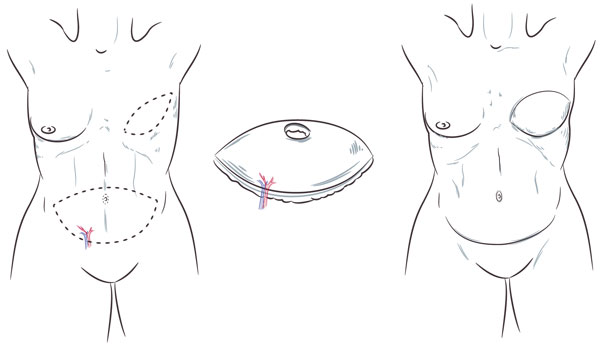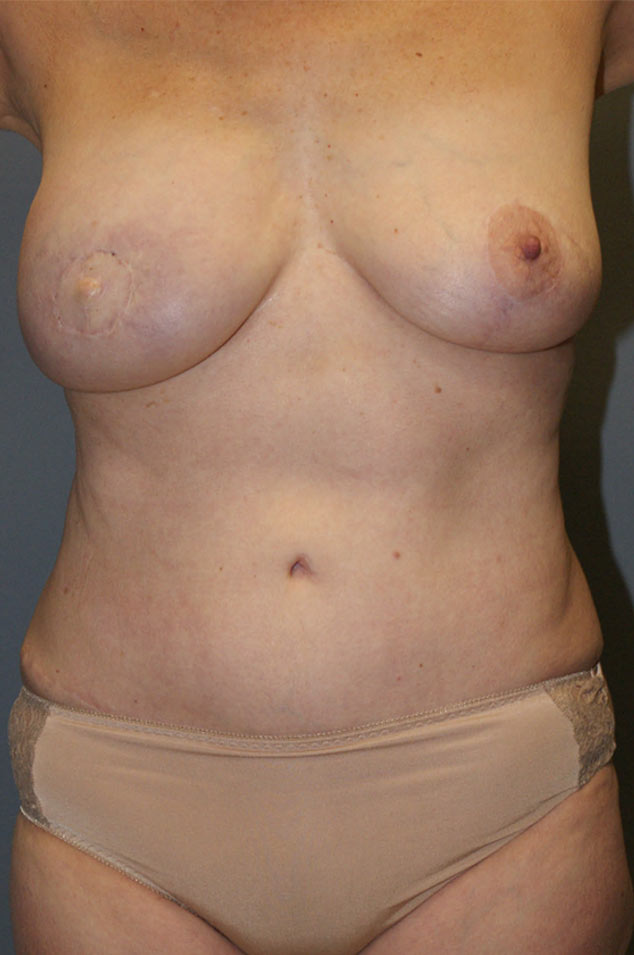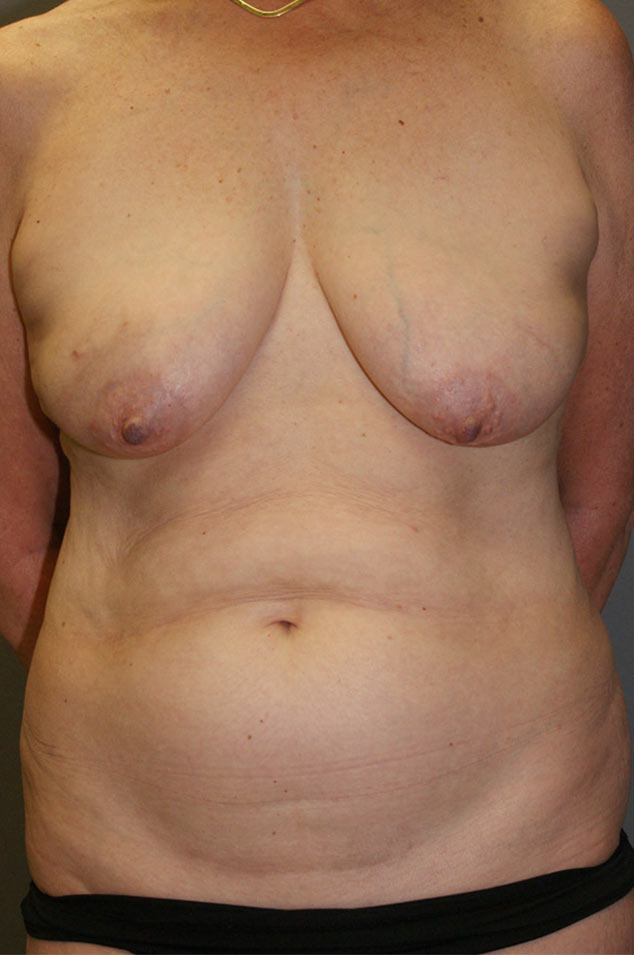SIEA Flap Breast Reconstruction
The SIEA flap uses a woman’s own abdominal tissue to create a beautiful and natural appearing breast.

What is The SIEA Flap PRocedure?
The SIEA flap is an advanced microsurgical procedure that recreates a breast using a woman’s own abdominal tissue. Skin and fat are removed from the lower abdomen without disrupting the strength layers of the abdominal wall. Not all women’s anatomy allows for this approach. The abdominal tissue is then transferred to the chest and its blood vessels connected using delicate microsurgical techniques. The tissue is reshaped to resemble a breast, giving a very natural appearance and feel. Closure of the abdominal incisions contours the abdomen in a similar manner to an abdominoplasty, or tummy tuck.

Benefits of SIEA Flap Breast Reconstruction
- Very natural appearance and feel
- Generally a better match to the other side, particularly if a woman does not want to alter the opposite breast
- Can be larger if a woman has sufficient abdominal tissue
- Ages more like a natural breast
- More reliable when the breast skin is damaged by radiation
- Contours the abdomen like a tummy tuck
- Preserves the strength layer of the abdomen, maintaining core strength and avoiding abdominal hernias and bulges
- Excellent long-term patient satisfaction
Who Is A Candidate?
A woman who favors reconstruction with her own tissues and has sufficient abdominal tissue to transfer may be a good candidate for an SIEA or DIEP flap. A very thin person or someone who has had a prior abdominoplasty may be better suited to a different form of reconstruction.
Women who have received prior radiation therapy to the breast or who will require it to treat their breast cancer may benefit from reconstruction with their own tissues. Healthy living tissue tolerates the effects of radiation better and is less likely to develop a serious complication.
Breast reconstruction with abdominal tissue requires a more extensive operation and a longer recovery, so patients should be in generally good health.
During your consultation, share your goals and priorities with Dr. Davison and Dr. Pinell. This will help them identify the best method of reconstruction for you.


RIGHT SKIN-SPARING MASTECTOMY, ABDOMINAL FLAP RECONSTRUCTION, LEFT MASTOPEXY for SYMMETRY
The scar patterns and results following SIEA flap reconstruction closely resemble the results of DIEP flap reconstruction.

SIEA Flap Reconstruction: What To Expect
- The first stage of reconstruction can usually be performed at the time of the mastectomy.
-
- If radiation treatments are planned, it is advantageous to place a temporary tissue expander at the initial operation. After radiation therapy is completed and the breast skin recovered, generally 6 months, a second operation is performed to remove the tissue expander and reconstruct the breast using an SIEA flap.
- A one-sided SIEA flap operation takes approximately 4 to 6 hours.
- Patients generally stay in the hospital for 3 to 5 days, but complete recovery may take 6-8 weeks.
- Subsequent operations are often planned to refine the reconstructed breast, create a nipple, or to balance the opposite side.
Frequently Asked Questions
-
How is an SIEA flap different than a DIEP flap?
- An SIEA flap and DIEP flap make use of the same lower abdominal tissue to rebuild the breast.
- Their blood supply is different, and harvesting each flap affects the abdominal wall to a different degree. A DIEP flap requires an incision in the abdominal wall fascia (the strength layer surrounding the rectus muscles) to identify the deep inferior epigastric vessels. An SIEA flap is based on blood vessels that course on top of the abdominal wall fascia, so that layer is completely preserved.
- The choice between these two flaps is mostly influenced by a woman’s anatomy, as many women do not have sufficiently large superficial vessels to supply an SIEA flap. Other factors include the size of the flap and surgeon experience.
-
Can an SIEA flap reconstruction be performed at the time of mastectomy?
- In many cases, yes. Immediate breast reconstruction is generally safe, produces the best aesthetic result, and is beneficial to coping with the loss of a breast.
- In some circumstances, it is beneficial to perform the SIEA flap reconstruction at a later time, after a woman has completed all her breast cancer treatments. In these cases, a temporary tissue expander is often placed at the time of mastectomy to preserve the breast skin.
-
Can SIEA flaps be used to reconstruct both breasts if a bilateral mastectomy is performed?
- Generally, yes. If a woman has sufficient abdominal fat, one half of the lower abdomen can be used to reconstruct each breast.
-
What are the risks of SIEA flap breast reconstruction?
- Transferring tissue from the abdomen to the chest requires the creation of new connections between their blood vessels. Even with meticulous microsurgical technique, there is an approximately 5% risk of clotting at those connections and flap failure.
- Other potential complications of SIEA flap breast reconstruction include: bleeding (hematoma), infection, wound healing problems, and fat necrosis (hard knots that develop in areas of the reconstructed breast with poor circulation).
- The abdominal donor site can also develop post-operative complications, such as delayed wound healing, or fluid pockets (seromas). Because the SIEA flap does not disrupt the abdominal wall, hernias and bulges in the abdomen are avoided.
- Major blood clots (DVT, deep vein thrombosis or PE, pulmonary embolism) are uncommon but can be dangerous. To prevent this serious complication, patients are encouraged to get out of bed and walk soon after surgery, and are given blood thinners in the hospital and after discharge, usually for 2 weeks.
-
How long does an SIEA flap operation take, and how long is a patient usually in the hospital?
- A unilateral (one-sided) SIEA flap reconstruction takes 4 to 6 hours. Patients are hospitalized for 3 to 5 days to monitor the flap and recover from surgery.
-
What is the recovery time following an SIEA flap operation?
- Patients should be out of bed the day after surgery and then gradually increase their activities from that point forward. While most women have resumed a modified daily routine by 2 to 3 weeks, a full recovery can take 6 to 8 weeks.
-
Are subsequent surgeries needed after an SIEA flap?
- Oftentimes, yes. Women will frequently undergo revision procedures to refine or enhance the appearance of the reconstructed breast. Nipple reconstruction and balancing operations on the opposite breast can be performed at that time as well.
-
Do the surgeons at DAVinci Plastic Surgery perform SIEA flaps?
- Yes! Dr. Davison and Dr. Pinell perform SIEA flaps with technical expertise, artistic vision, and compassionate care. They have extensive experience with microvascular breast reconstruction and an outstanding record. In order to minimize patients’ time under anesthesia and to deliver the best possible result, these operations are always performed by both surgeons working as a team.
-
Does insurance cover SIEA flap breast reconstruction?
- Yes. All methods of breast reconstruction after a mastectomy and balancing procedures to the opposite breast are generally covered by insurance.
